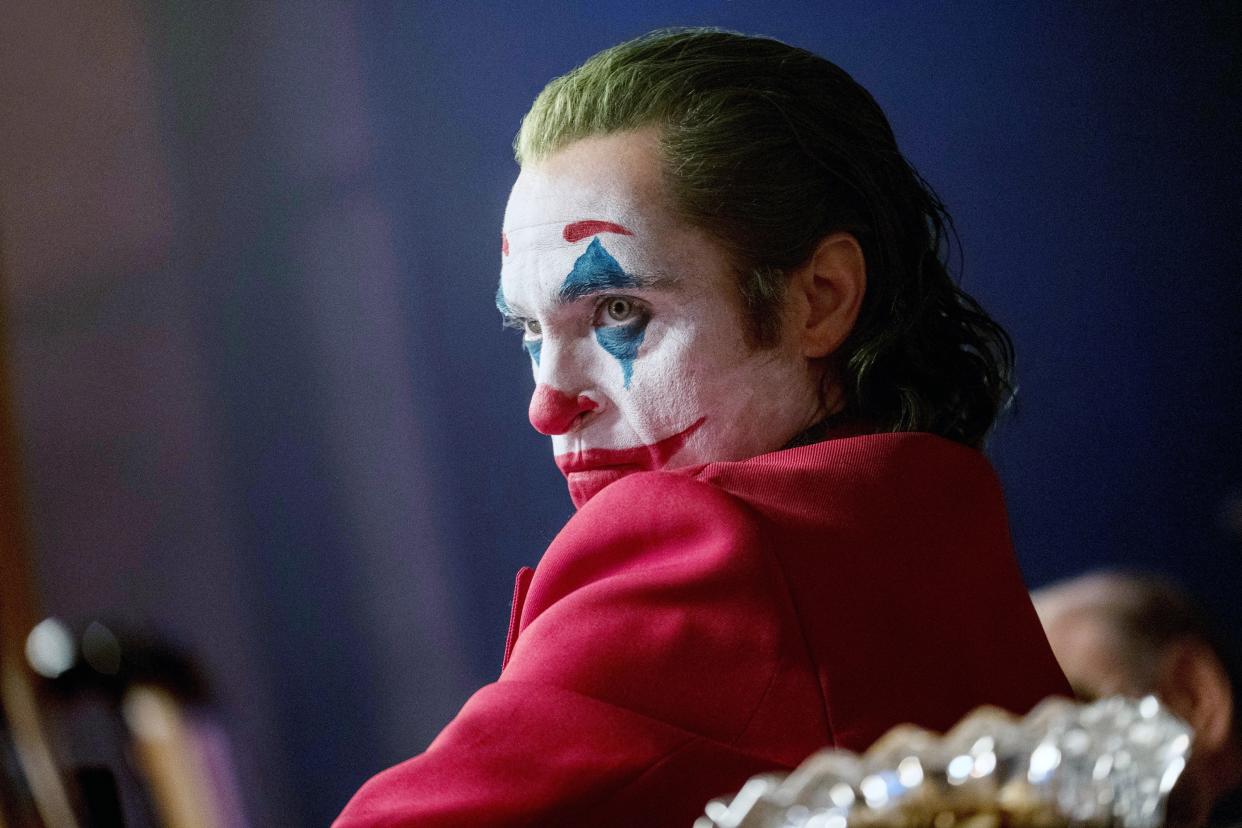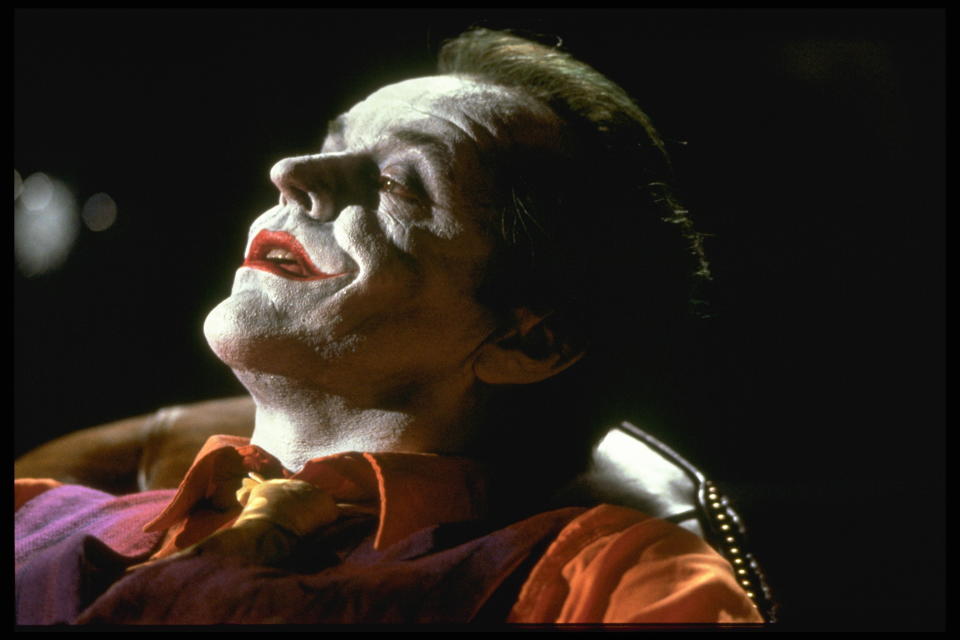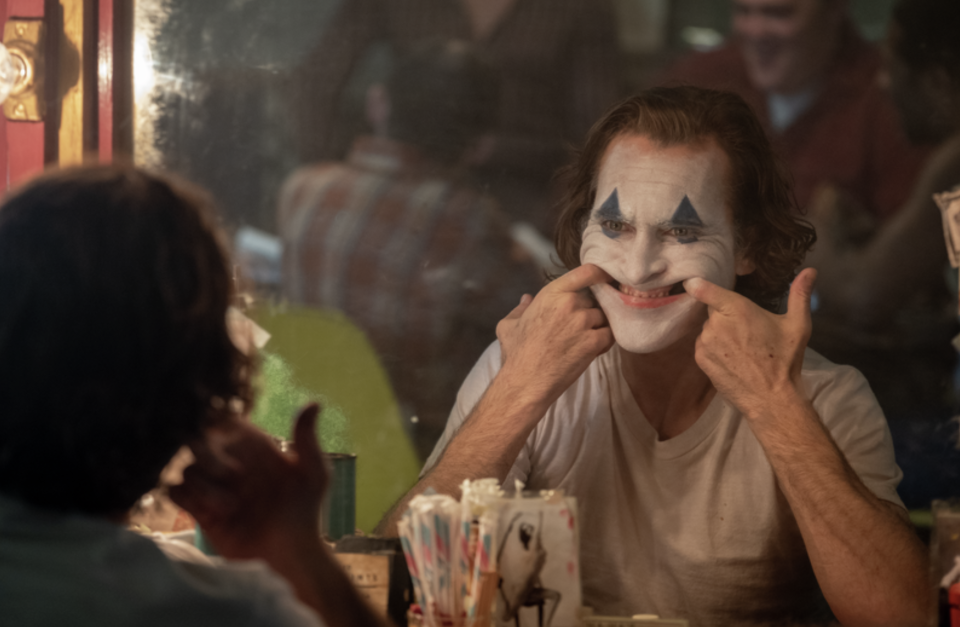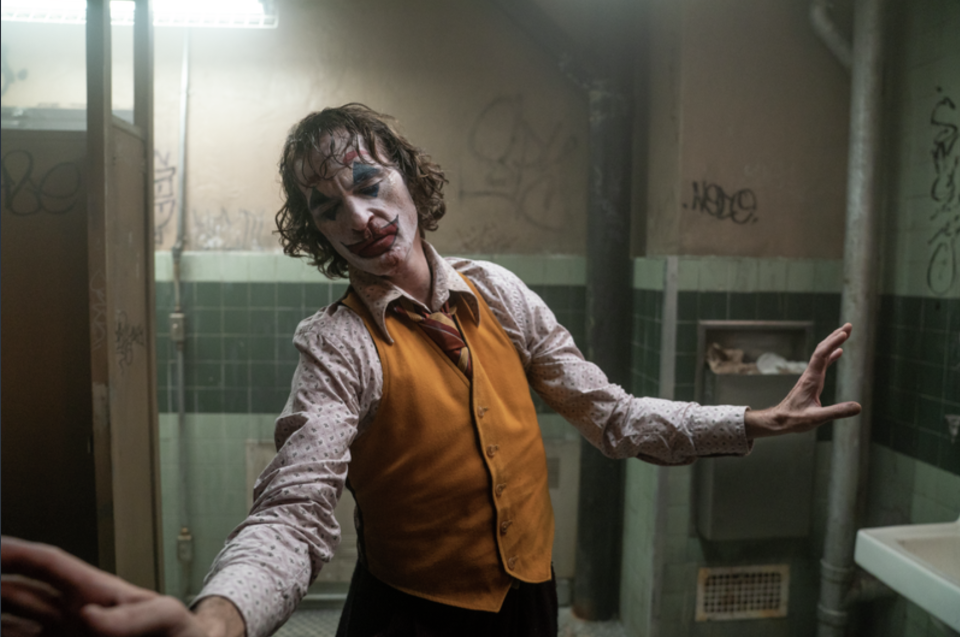'Joker': The answers to all the questions you'll be asking after seeing the film (spoilers)

Warning: This post contains spoilers for Joker
After nearly 80 years as the scariest clown in comics, the Joker finally gets his own feature film… and there isn’t a Dark Knight in sight. Todd Phillips’s new one-shot origin story, Joker, unfolds in a pre-Batman Gotham City and focuses on the grim misadventures of Arthur Fleck (Joaquin Phoenix), a mentally unstable would-be entertainer who eventually becomes a version of the villain we know so well.
Co-written by Phillips and Scott Silver, Joker exists outside of any previously established Batman cinematic continuity, be it Tim Burton, Christopher Nolan or Zack Snyder. At the same time, the movie also functions as an amalgam of all those previous iterations, as well as the character’s long comic history.
Coming out of Joker, you’ll likely be wondering about how this movie relates to the larger Bat-lore, and Yahoo has you covered. Read on for in-depth answers to all your burning Joker questions.
What’s the Joker’s real origin story?
There’s only thing that’s consistent about the Joker’s past: Nothing. Ever since the Clown Prince of Crime claimed his first victims in Batman No. 1, published in 1940 — the same comic that published the Caped Crusader’s origin story for the first time — who he is and how he came to be has remained a story open to revision.
Read more: How each actor prepared to play Joker
“If I’m going to have a past, I prefer it to be multiple choice,” Joker himself remarks in Alan Moore’s 1988 graphic novel The Killing Joke, where the Watchmen author invented his own backstory for the character. In some versions, the Joker is a criminal who falls into a vat of chemicals; in others, he’s a failing stand-up comic who meets the same fate; and in still others he’s an ancient evil that’s been hanging around since caveman times. The cinematic Jokers also hail from wildly different backgrounds: Jack Nicholson took the plunge into a green chemical bath, Heath Ledger was chaos personified and Jared Leto… really liked tattoos.

Joker is the first time on the big screen where the character has a clearly established identity before being anointed criminal royalty. Born and raised in Gotham and working as a clown-for-hire while dreaming of stand-up stardom, Arthur endured a childhood of abuse and neglect before being taken in by Penny Fleck (Frances Conroy), a former employee of the city’s leading citizens, Thomas and Martha Wayne.
Like her adopted son, Penny has her own mental issues, even believing that she and Thomas shared a torrid affair that resulted in Arthur’s birth. Fleck’s path towards Joker-hood begins when he accidentally shoots three finance bros on a subway train with a gun given to him by a co-worker while still wearing his facepaint. That incident sets off a chain of events that undermine his already tenuous grasp on reality, aided by the public’s embrace of a clown vigilante who seems to be fighting back against the rich and powerful.

In interviews, Phoenix has suggested that, much like the Joker’s multiple origin stories, there are many ways to interpret Arthur’s evolution from put-upon nobody to public menace. “You can either say here’s somebody who, like everybody, needed to be heard and understood and to have a voice,” the actor told Vanity Fair recently.
Or you can say this is somebody that disproportionately needs a large quantity of people to be fixated on him. His satisfaction comes as he stands in amongst the madness.” In other words, as with all things Joker, it’s multiple choice.
Is there any sign of Batman in Joker?
As noted above, the action takes place before Batman begins seeking justice in Gotham. But the film definitely sets up the rise of the Caped Crusader. Thomas Wayne is a major presence in the film, the symbol for everything that Arthur Fleck and his acolytes detest about Gotham. The mogul’s son, Bruce, also has a small but pivotal role.

And the film ends with the fourth cinematic retelling of the murder of Bruce’s parents in a crime-ridden alley outside of a Gotham movie palace showing a Zorro movie. (In this case, 1981’s Zorro the Gay Blade instead of 1940’s The Mark of Zorro.) For this version, a random rioter in a clown mask pulls the trigger and makes Bruce an orphan — a callback to Tim Burton’s 1989 Bat-blockbuster where future Joker Jack Napier (Jack Nicholson) killed the Waynes. (Burton ran with that controversial idea over the strenuous objections of the movie’s writer, Sam Hamm.)
That scene also ties into Batman v Superman’s Robin-killing Joker: there’s an Excalibur poster at the theatre as the Wayne family is exiting that matches the marquee in Snyder’s 2016 movie.
Could Phoenix’s Joker become another Joker?

Arthur may be unlike any other Joker we’ve seen onscreen before, but Phillips and Phoenix do incorporate elements from some of his predecessors, allowing Joker to function as a potential origin story for any and all of the earlier movies. In addition to the murder of the Waynes, there’s another scene where Arthur is filmed in the back of a police car gazing out at the sight of Gotham City on fire.
That echoes a similar moment from Christopher Nolan’s The Dark Knight where Heath Ledger’s Joker takes a victory lap after outsmarting Batman. There’s even a nod in the direction of Cesar Romero, who donned the greasepaint in the 1966 TV series, as well as the spin-off movie. When Arthur goes to visit his “brother” Bruce at Wayne Manor, he watches the young boy slide down a pole on his private playground just like Adam West’s Caped Crusader.
Is Martin Scorsese involved with the movie?

Phillips has openly acknowledged the debt that Joker owes to such Martin Scorsese classics as Taxi Driver and The King of Comedy. In fact, Robert De Niro’s Gotham City talk show host, Murray Franklin, is essentially a version of Rupert Pupkin who had the right stuff to become David Letterman. Meanwhile, Glenn Flesher plays one of Arthur’s co-workers at the clown company who deliberately recalls Travis Bickle’s fellow cabbie Wizard, played by Peter Boyle. And speaking of Travis, Joker features Zazie Beetz in the Cybill Shepherd role of the beautiful woman that Arthur becomes obsessed with.
In case you’re wondering, yes, Scorsese is well-aware that Phillips borrowed liberally from his filmography. At point point during the movie’s long road to the big screen, the legendary director was reportedly onboard as a producer, but ultimately left to focus on his own projects like The Irishman.
Read more: Scorsese says Marvel films are ‘not cinema’
Speaking with IGN, Phillips recalled some of his conversations with Scorsese. “I’m lucky enough to have spent three hours with him one day talking about movies, and it was the best day of my filmmaking life. I felt bold enough to send him the script ... and he called me and we had a great 20-minute conversation.”
In lieu of his own involvement, Scorsese put Phillips in touch with his longtime producer Emma Tilling to ensure that Joker would be shot on the mean streets of New York City. “She’s the queen of New York — she runs New York movies,” Phillips raves. “She has the best crews, [and] relationships with the MTA.”
Does the Joker’s talk show debut go down like The Dark Knight Returns?

It’s no exaggeration to say that Frank Miller’s seminal 1986 graphic novel has influenced every single Batman movie made since. And The Dark Knight Returns finds its way into Joker as well via the climactic scene where Arthur officially introduces himself to Gotham City as the Joker via Murray Franklin’s chat show. In third volume of Miller’s story, an older Joker appears on a late night show hosted by David Endocrine — Gotham’s answer to David Letterman — to show the world that he’s gone sane.
Joining him on the couch are his media-hungry psychiatrist Bartholomew Wolper and sex therapist Doctor Ruth, modeled after real-life ’80s sex expert Dr. Ruth Westheimer. The good doctor comes Joker’s first victim in what ends up being a gruesome massacre: the far-from-reformed villain uses his signature laughing gas to murder everyone in the television studio, before escaping for one final confrontation with Batman.
Arthur’s appearance on Franklin’s show doesn’t end with as high a body count, but it’s equally shocking. His initial plan is to shoot himself live on air with the same gun he used on his first three victims. But that changes when he takes his seat on the couch next to sex guru, Dr. Sally (Sondra James). After a combative interview with Murray, Joker pulls out his firearm and fires a bullet directly into the host’s skull. At that point, the entire audience flees, but the damage is already done: footage of the graphic killing bounces all over Gotham, inciting a full-fledged riot against the city’s privileged class. And this time, there’s no Dark Knight to stop them.
Are there any other comic book Easter eggs?

In the film, Arthur is a struggling wannabe stand-up comic, which is similar to how the character was depicted in The Killing Joke. Arkham Asylum, the legendary Gotham institution that winds up housing most of Batman’s rogue’s gallery through the years, is present in Joker but renamed Arkham State Hospital and serves as a key location in the film.
And one of the movie’s secondary characters, the social worker Debra Kane, shares her moniker with a character who appeared in 1995’s Batman: The Ultimate Evil — in that novel (which was later adapted in a comic), Debra Kane works for Gotham’s Child Protective Services and becomes friends with Bruce Wayne. And Kane’s surname is an homage to Batman creator Bob Kane.
Wait, what was that ending all about?

The final act begins with Arthur’s full transformation into Joker, followed by a frenzied police chase on the subway, his murderous TV appearance, and him in a squad car slowly making its way through the riot-filled, flame-engulfed streets of Gotham taking in the chaos he incited.
His reverie is literally smashed by an ambulance piloted by two clown-masked creeps, who slam into the police car and put the unconscious Arthur, their twisted messiah, on the dented hood of the car. After a few moments he comes to and, surrounded by a throng of his disciples, begins dancing and the screen fades to black.
But the film isn’t over yet: a makeup-free Arthur wakes up in restraints in mental hospital that could be Arkham. As we’ve seen through the course of the film, Arthur is delusional, the ultimate unreliable narrator, and the audience is left with the sense that the entire film was a fever dream, occurring only in Arthur’s head.
As he cackles with laughter, his psychiatrist asks what’s so funny, and there’s a flash to Bruce Wayne in the alley mourning his slain parents, the wish of a disturbed man. The film ends with Arthur making a futile breakout attempt to the strains of Frank Sinatra’s “That’s Life.” While there might be some Inception-esque debate about the ambiguity of the finale, and exactly how much of the proceeding two hours was “real,” there is no doubt the terribly unfunny joke is on Arthur.
Is there an end credit sequence?
No.
Will there be a sequel?

Joker was conceived as the cinematic version of a one-shot comic book issue, and the movie does come to the fairly definitive conclusion described above. In August, though, Phillip’s muddied the waters by suggesting he wouldn’t be averse to revisiting his Clown Prince if Phoenix was willing to put on the makeup and lose 50 pounds all over again. The director has since corrected the record, insisting that Arthur’s story is done. “It's not about world-building, it's not about other versions,” Phillips told the press last month. “It's like, here's our version of the origin story. That's it.”
Read more: Heath Ledger’s Joker tops poll of iconic movie moments
That said, Joker’s anticipated commercial success — the R-rated film is expected to earn upwards of $80 million during its opening weekend — could prompt a re-evaluation of the “no sequel” stance. Instead of Joker 2: It’s Showtime!, though, it’s more likely that Warner Bros. would seriously explore an idea that Phillips pitched during the Joker development process: an entire label tentatively called “DC Black” that would offer distinctive filmmakers the opportunity to put grittier spins on classic characters. (Not for nothing, but Phillip’s pitch sounds an awful lot like DC Black Label, a DC Comics imprint that’s been publishing edgy books like Batman: Damned and Wonder Woman: Dead Earth since 2018.)
The possibilities of potential DC Black combinations are endless: J.C. Chandor going all Wall Street on young Lex Luthor; Karyn Kusama doing a rough-and-tumble Deathstroke adventure; and Jennifer Kent helming a spooky Deadman picture. Joaquin Phoenix would be a great Boston Brand...
Joker is in cinemas now.

 Yahoo Movies
Yahoo Movies 

